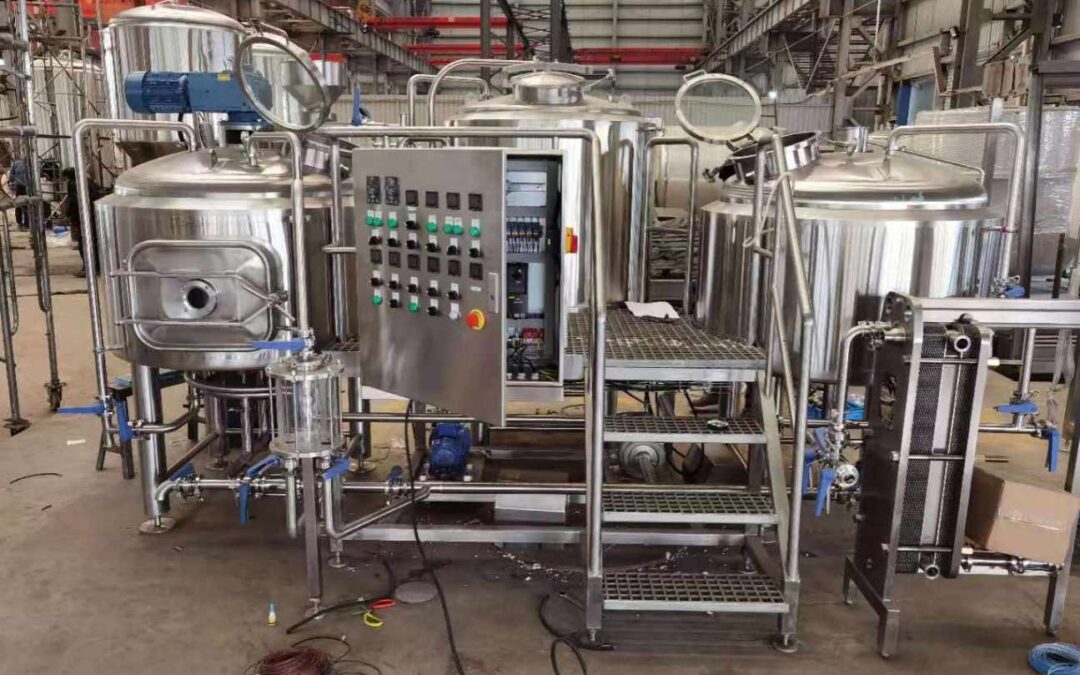The history of microbreweries dates back centuries, but the modern microbrewery movement began in the 1970s in the United States. During this time, a group of homebrewers in California began experimenting with making their own beer and sharing it with friends.
In 1976, the New Albion Brewery was founded in Sonoma, California, becoming the first modern microbrewery in the United States. This small brewery produced flavorful, high-quality beers that were quite different from the mass-produced beers that dominated the market at the time.
Over the following decades, the microbrewery movement grew in popularity, and microbreweries began popping up all over the United States and other parts of the world. The rise of microbreweries was fueled by a growing interest in artisanal and locally-produced foods and beverages.
Today, microbreweries are a staple of the craft beer industry, and they continue to thrive as beer lovers seek out unique and flavorful brews. Microbreweries are typically small, independently owned and operated, and produce limited quantities of beer using traditional brewing techniques and high-quality ingredients. Many microbreweries also offer tasting rooms or brewpubs, providing visitors with an opportunity to sample their beers and learn about the brewing process firsthand.
Key Phases To Building A Successful Microbrewery:
Scaling a microbrewery involves careful planning and executing expansion in a phased approach. Here are some key steps to scaling your microbrewery in phases:
Phase One: Increase Production Capacity
The first phase of scaling a microbrewery involves increasing production capacity. This typically involves upgrading or adding new brewing equipment and tanks, hiring additional staff, and increasing production hours. By increasing production capacity, you can meet growing demand and expand distribution to new markets.
Phase Two: Expand Distribution
Once production capacity has been increased, the next phase is to expand distribution. This can involve partnering with new distributors, adding new markets, and increasing online sales. It’s essential to conduct market research and develop a distribution strategy that considers customer preferences and market trends.
Phase Three: Taproom Expansion
In the third phase, focus on expanding the taproom to accommodate more customers and provide a better experience. This can involve adding outdoor seating, renovating the interior, and upgrading technology to enhance customer service.
Phase Four: Diversify Product Offerings
The final phase of scaling a microbrewery is to diversify product offerings. This can include creating new beer styles, adding non-alcoholic options, and launching a line of merchandise. It’s important to conduct market research and understand customer preferences before introducing new products to the market.
Building a successful microbrewery also involves several key stages, including:
Research and Planning: Before starting a microbrewery, it’s essential to conduct extensive research on the industry, market demand, and competition. This includes developing a solid business plan, choosing the right location, selecting appropriate equipment, and obtaining necessary licenses and permits.
Quality Control: One of the most critical factors in building a successful microbrewery is producing high-quality beer consistently. This requires investing in top-notch equipment, sourcing high-quality ingredients, and establishing rigorous quality control processes.
Marketing and Branding: Building a strong brand and marketing strategy is crucial to attracting customers and building a loyal following. This includes developing a unique brand identity, creating a visually appealing and memorable logo and packaging, and developing effective marketing campaigns to reach target audiences.
Taproom and Events: Building a successful microbrewery also involves creating an inviting and engaging space for customers to sample and enjoy your beers. This includes designing a comfortable and aesthetically pleasing taproom, hosting events, and offering brewery tours.
Financial Management: Finally, building a successful microbrewery requires effective financial management. This includes monitoring cash flow, managing expenses, tracking inventory, and developing a pricing strategy that balances profitability with customer demand. It’s essential to have a solid financial plan and to continually assess and adjust your strategies as needed to ensure long-term success.
Maximizing profits in a microbrewery involves several strategies, including:
- Increasing Production Efficiency: Improving production efficiency is crucial to reducing costs and maximizing profits. This involves optimizing brewing processes, reducing waste, and streamlining operations.
- Controlling Inventory Costs: Controlling inventory costs is essential to maintaining profitability. This includes managing ingredient costs, minimizing waste, and tracking inventory levels to prevent overstocking or stockouts.
- Enhancing Taproom Sales: The taproom is a significant revenue stream for microbreweries, so enhancing taproom sales is crucial to maximizing profits. This can include hosting events, offering food options, and creating a comfortable and inviting atmosphere to attract customers.
- Expanding Distribution Channels: Expanding distribution channels is a key strategy to increase sales and profits. This can involve partnering with new distributors, entering new markets, and leveraging online sales channels.
- Building a Strong Brand: Building a strong brand is essential to attracting and retaining customers and maximizing profits. This involves developing a unique brand identity, creating visually appealing and memorable packaging, and developing effective marketing campaigns to reach target audiences.
- Pricing Strategy: Developing a pricing strategy that balances profitability with customer demand is essential to maximizing profits. This involves understanding customer preferences and market trends, tracking costs, and regularly reassessing pricing to ensure it remains competitive.
Minimizing risks at a microbrewery involves several strategies, including:
- Ensuring Safety: Safety should be a top priority at a microbrewery. This includes providing employees with proper training, implementing safety protocols, and regularly inspecting equipment and facilities to identify and address potential hazards.
- Maintaining Equipment: Proper maintenance of brewing equipment is crucial to minimize the risk of equipment failure or breakdowns. It’s important to develop a maintenance schedule, conduct regular inspections, and promptly address any issues to avoid disruptions in production.
- Complying with Regulations: Compliance with federal, state, and local regulations is essential to avoid legal and financial risks. It’s important to stay up-to-date with regulations, obtain necessary licenses and permits, and maintain accurate records to ensure compliance.
- Managing Finances: Effective financial management is critical to minimize financial risks. This includes creating a solid financial plan, monitoring cash flow, managing expenses, and tracking inventory to avoid stockouts or overstocking.
- Conducting Quality Control: Ensuring consistent beer quality is essential to minimize the risk of customer complaints and recalls. This involves implementing quality control processes, regularly monitoring beer quality, and quickly addressing any issues.
- Managing Employees: Proper management of employees can help minimize the risk of workplace incidents, employee turnover, and legal issues. This involves creating a positive work environment, providing proper training and support, and enforcing company policies and procedures.
Overall, minimizing risks at a microbrewery requires a comprehensive approach that involves a focus on safety, equipment maintenance, compliance, financial management, quality control, and employee management while maximizing profits in a microbrewery requires careful planning, strategic decision-making, and a focus on efficiency, innovation, and customer satisfaction.
It’s important to note that scaling a microbrewery requires careful planning and execution. It’s essential to assess your financial situation, consider customer demand, and conduct market research to develop a phased expansion plan that ensures long-term success.

